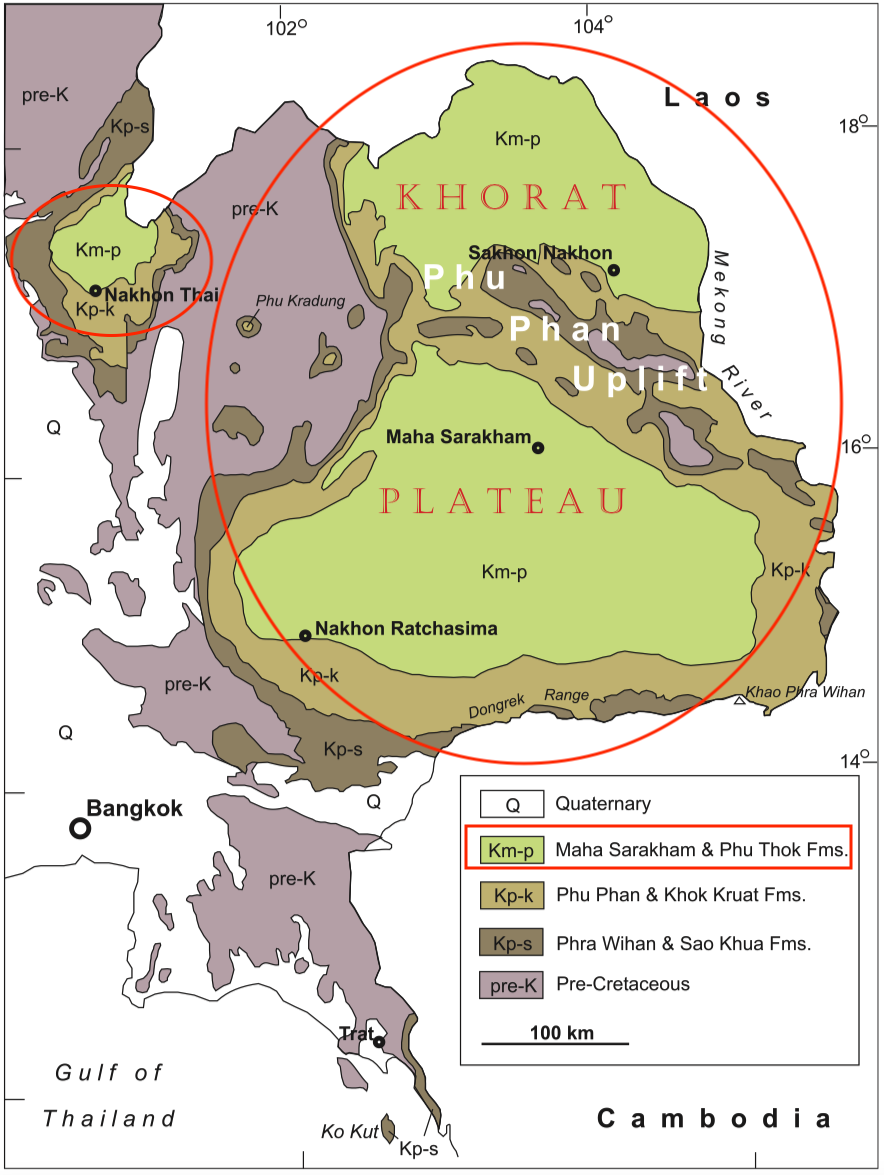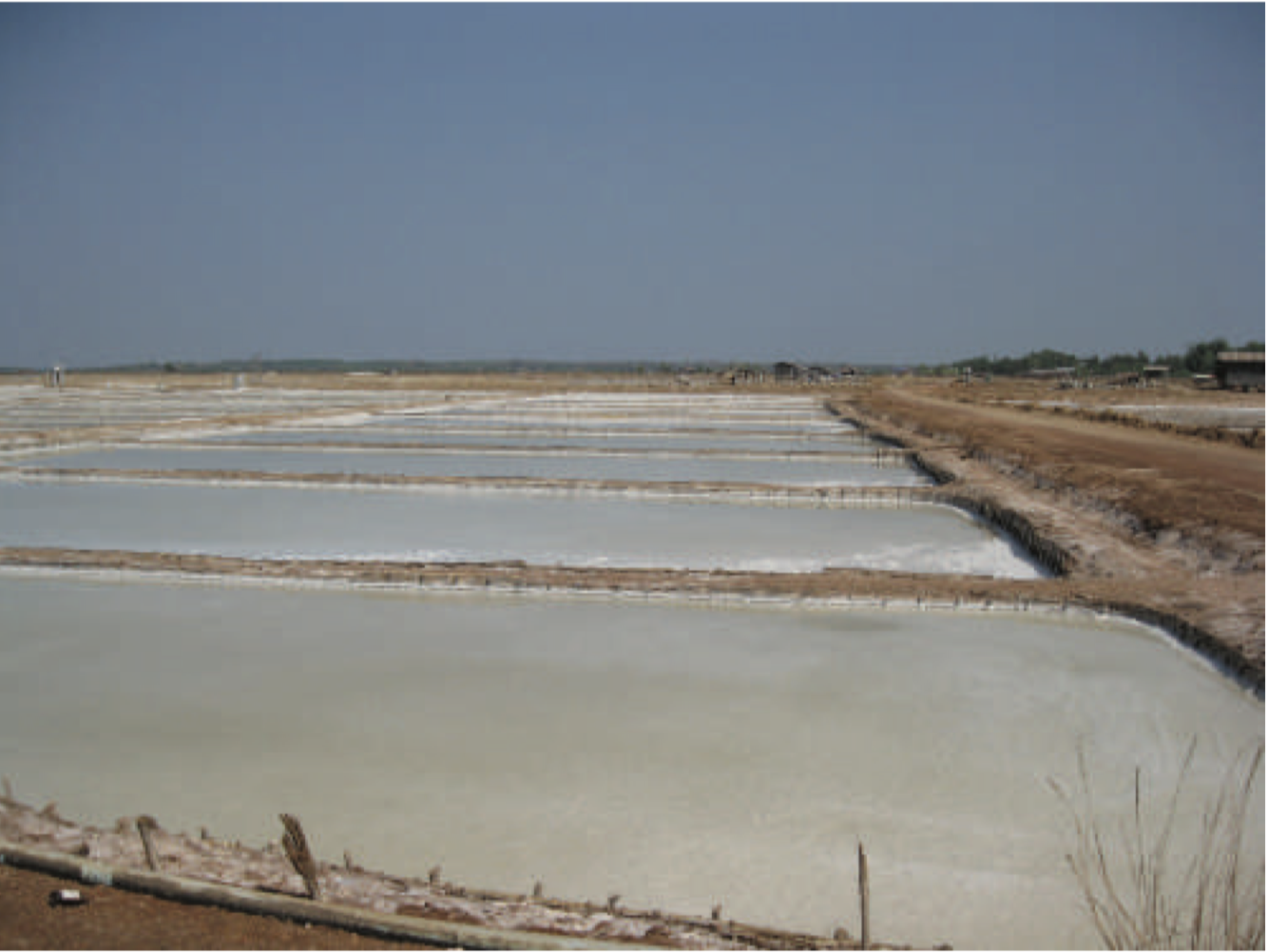Maha Sarakham Fm
Type Locality and Naming
Synonym: หมวดหินมหาสารคาม
[Figure: NE and SE Thailand, showing distribution of Cretaceous outcrops. (Meesook, 2011. Page 170). At least some of the Pre-Cretaceous sedimentary rocks on the map may be Jurassic and the position of the Jurassic-Cretaceous boundary is discussed in Meesook (2011).]
Lithology and Thickness
[Figure: Low-lying area in Udon Thani Province where salt of the Maha Sarakham Formation has been mined (Meesook, 2011).]
Relationships and Distribution
Lower contact
Upper contact
Regional extent
GeoJSON
Fossils
Age
Depositional setting
Additional Information
This formation has been excluded from the Khorat Gr by recent oil companies’ papers, but a local unconformable contact as mentioned by Racey and others (1994) is not sufficient to remove this formation from the group (see: International Stratigraphic Guide (Hedberg, 1976; Murphy and Salvador, 1999)). This formation was also miswritten “Mahasarakham Formation”. Ratanajaruraks (1990) named this formation the Chaturat formation. However, the Maha Sarakham has priority.

